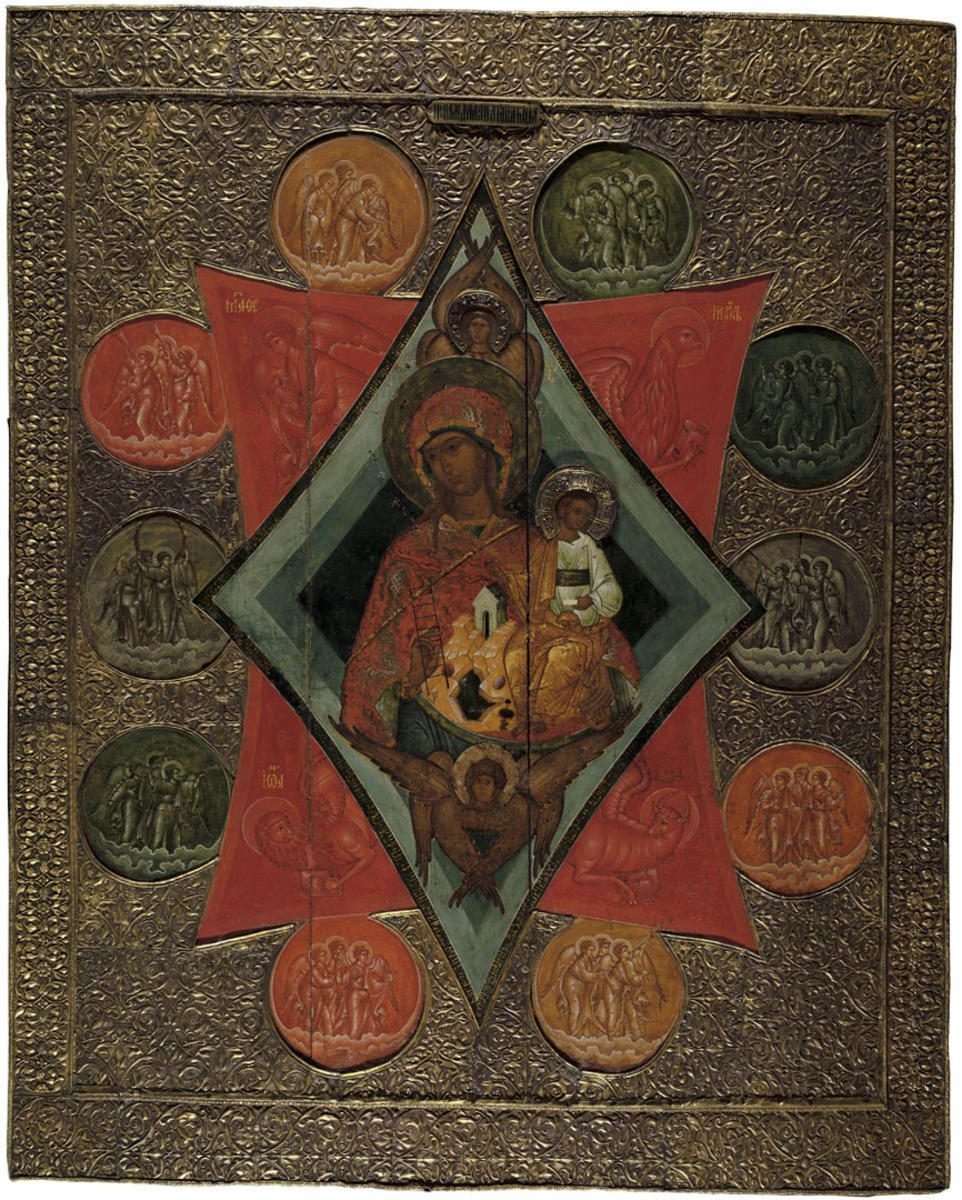Mid-16th century
Copy
The iconography of ‘Our Lady of the Burning Bush’ was formed in Byzantium in the 11th-13th centuries and was inspired by the hymns praising the everlasting virginity of the Mother of God. In the Russian iconography, these images became widespread in the 16th century.
The subject is based on the Old Testament prophecy of the incarnation of Christ: when on Mount Horeb God Himself spoke to Moses through a burning thorn bush. In many liturgical texts, the Virgin is compared with this bush — ablaze, yet never consumed by flames (‘Just like the bush is not consumed burning, thus the Virgin did give birth’).
The Virgin and Christ Child are depicted in the centre of the icon against the background of two lozenges, red and green, symbolizing fire and the bush. The ladder, the gate and the mountain are Old Testament prototypes of the Mother of God. The symbols of four evangelists — an angel, an eagle, a lion and an ox (or calf) — can be seen in the corners of the red lozenge. There are angels representing natural forces in ten medallions.
The icon was restored by G.Z. Bykova in the All-Union Research Institute for Restoration in 1975.



